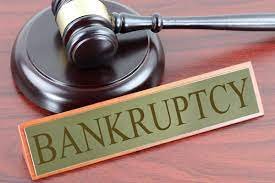Last Updated on July 14, 2024 by Asfa Rasheed
Table of Contents
Are you experiencing financial problems?
Close to 40% of American households are struggling to make ends meet. When people have trouble paying bills, feeding their families, and buying necessities, something has to give. A lot of times the end result is declaring bankruptcy or ending up in foreclosure.
Both of these have long-term financial consequences, so it’s important to take them seriously.
Are you confused about foreclosure vs. bankruptcy? Keep reading to get a clear understanding of the differences between the two.
What is a Foreclosure?
When you can’t pay your mortgage, your lender may offer you a couple of different options. The first would be to try a short sale. This is when you sell the house for less than what you owe on the mortgage.
If the home doesn’t sell or that’s not an option, the lender will hold a foreclosure auction. If the house doesn’t sell this way, the lender takes over ownership of the house and property. This is a foreclosure.
A foreclosure guide would tell you that a foreclosure means you defaulted on the loan and consequently gave up ownership of the property. This doesn’t free you from all financial obligations with the lender, however.
You may still be responsible for paying the difference between what you owe and the amount of money coming in from the sale of the home.
Check out this link and learn six things you should know about foreclosures in Austin.
What is Bankruptcy?
When you file for bankruptcy, your creditors have to stop trying to collect on your debts. A bankruptcy filing often also keeps creditors from garnishing your wages or taking any of your assets.
Chapter 13
If you file Chapter 13, you create a payment plan to pay off some of your debts. The reason it’s some of your debt is that your debt is listed by priority. Each payment plan depends on the type of debt and the amount you owe.
You get to keep your assets and your other debts are forgiven once you make the partial agreed-upon payments during the bankruptcy period.
Chapter 7
Chapter 7 bankruptcy is a little bit different. You have to liquidate most of your assets by selling them or giving them back to the lender. There’s no payment plan involved in this option.
You have to qualify for Chapter 7 bankruptcy. It’s more difficult to qualify for this option because you have to take a means test.
Check out a bankruptcy guide to get some helpful bankruptcy tips so that you do the least amount of damage to your credit.
Foreclosure vs. Bankruptcy
While it’s good to know the differences between the two, when you’re looking at foreclosure vs. bankruptcy, both have serious negative consequences for your credit report. If you’re dealing with either of these problems, it’s a good idea to speak to an attorney who deals with these issues.
Bookmark our site for easy access to the best, most informative, and interesting articles about health, technology, fashion, sports, home improvement, and more.
Read More: Manage Risk And Compliance Associated With Financial Services



























